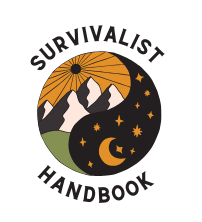Imagine finding yourself stranded at sea after a shipwreck, with nothing but your wits and basic resources to rely on for survival. In such a dire situation, knowing how to make the most of what you have becomes essential. This article, “Surviving at Sea: Basic Resources after a Shipwreck,” provides you with the knowledge and skills needed to navigate the treacherous waters and increase your chances of making it through. From finding shelter and fresh water, to preserving body heat and signaling for help, these invaluable tips and techniques will arm you with the tools to conquer adversity and emerge victorious. So whether you’re an adventurous soul or simply wish to be prepared for life’s unforeseen challenges, let’s dive into the world of survival at sea and equip you with the know-how to stay afloat against all odds.
Surviving at Sea after a Shipwreck
In a world where unexpected situations can arise, it is crucial to master basic survival skills, especially when faced with a shipwreck at sea. Knowing how to assess the situation, maintain a positive mindset, find floating debris, utilize the shipwrecked vessel, gather freshwater, find edible food, brave the elements, navigate and maintain direction, signal for help, and deal with medical emergencies can make all the difference in surviving such a challenging ordeal. This comprehensive guide will cover each of these topics in detail, equipping you with the knowledge needed to overcome the odds and emerge stronger.
Assessing the Situation
After a shipwreck, it is important to quickly assess the situation in order to make informed decisions. The first step is to check for injuries among yourself and fellow survivors. Attend to any wounds or fractures and provide basic first aid. It is also important to count the number of survivors to ensure everyone has made it safely through the shipwreck.
Next, identify if there is any nearby land or help visible. Look around and use any tools available, such as binoculars or telescopes, to scan the horizon for any signs of civilization or landmasses. This information can help you determine the best course of action.
While assessing the situation, take an inventory of the available resources. This includes any food, water, tools, or equipment that may have survived the shipwreck. Knowing what resources are at your disposal will help you plan for the days ahead.
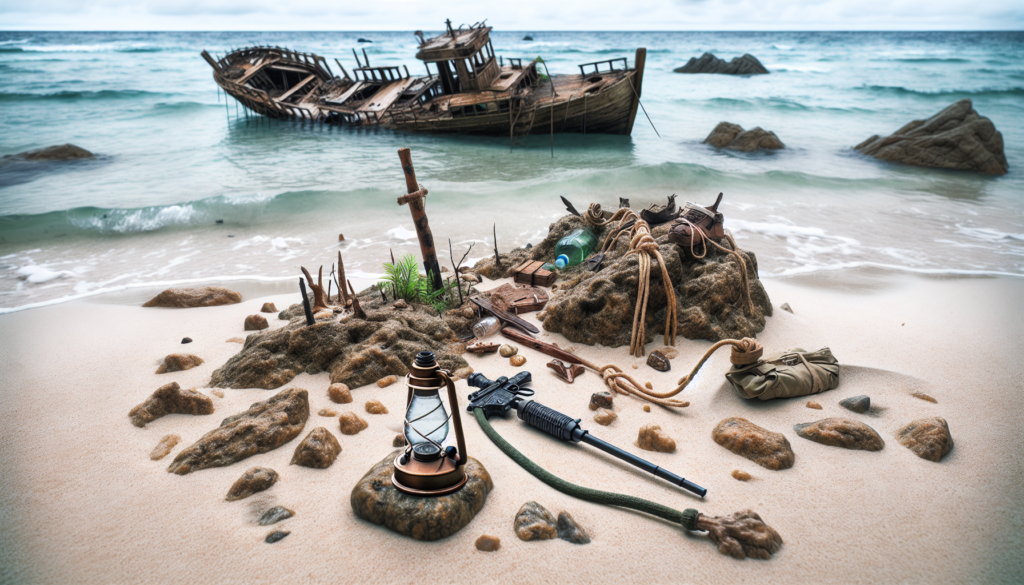
Maintaining a Positive Mindset
In a survival situation, maintaining a positive mindset is crucial. It is natural to feel scared or overwhelmed, but staying calm and avoiding panic is essential for clear thinking and decision-making. Take deep breaths, remind yourself that you are capable, and focus on the immediate task at hand.
Establishing routines can also help in maintaining a positive mindset. Having a sense of structure and purpose in your daily activities can provide comfort and a sense of normality during this challenging time. Create a schedule for tasks such as gathering food and water, maintaining the shelter, and keeping track of time.
Keeping hope alive is another important aspect of maintaining a positive mindset. Surround yourself with positive thoughts and affirmations. Share stories with fellow survivors that inspire hope for rescue. Remember that people have survived similar situations before, and you can too.
Providing emotional support to fellow survivors can also contribute to a positive mindset. Offer encouragement, listen actively, and provide a sense of community. Together, you can uplift each other’s spirits and navigate through the tough times.
Finding Floating Debris
Floating debris can be a valuable resource for survival at sea after a shipwreck. Understanding the importance of floating debris is crucial, as it can provide materials for shelter, tools, and even a means of signaling for help.
Search the surrounding area for any debris floating on the water’s surface. This can include items such as wood, plastic, or metal. Collect and bring them back to your location.
Utilize the floating debris to construct a shelter. Use wood or other materials to create a basic structure that provides protection from the elements. Additionally, debris can be repurposed as tools such as fishing spears or digging implements.
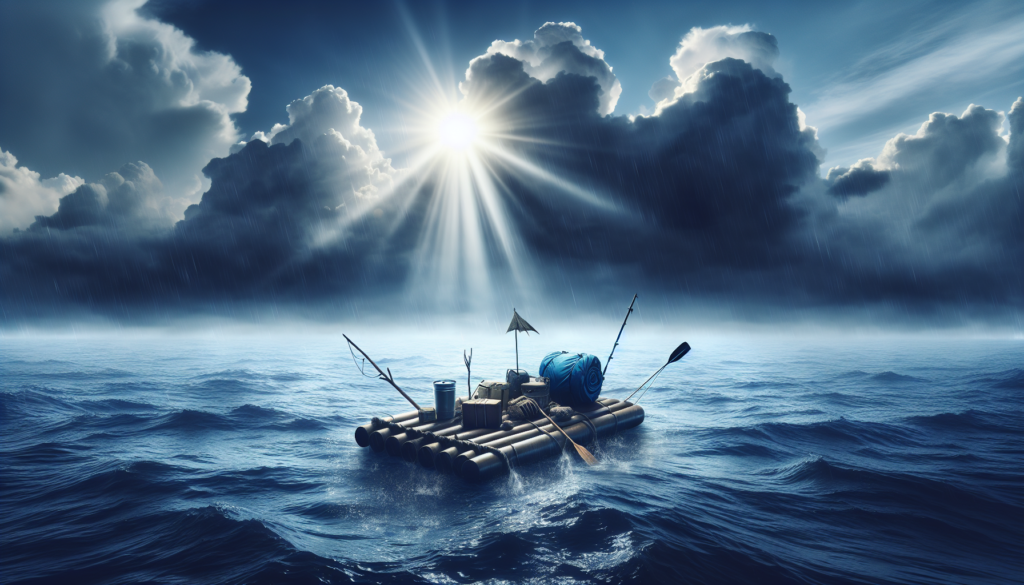
Using the Shipwrecked Vessel
The shipwrecked vessel itself can be a valuable asset in your survival efforts. Begin by assessing the condition of the vessel. Look for any salvageable items or equipment that may be useful in your situation.
Locate useful items and equipment such as life jackets, ropes, or navigation tools. These can greatly enhance your chances of survival. Determine how much of the ship is still accessible and make a mental map of where everything is located.
Repurpose components of the shipwrecked vessel for survival. For example, the ship’s floating devices may be used as additional flotation or to create fishing nets. Be creative and resourceful with the available materials.
Gathering Freshwater
One of the most critical aspects of survival at sea is obtaining freshwater. There are several methods you can use to ensure a constant supply of drinking water.
Obtaining and collecting rainwater is a reliable method. Use any available containers to capture rainwater during storms. Set up a system to collect and store as much rainwater as possible. This water can be purified through boiling or by using water purification tablets if necessary.
Creating a solar still is another way to obtain freshwater. Use a container to collect seawater, and cover it with a transparent material such as plastic. The heat from the sun will cause evaporation, and the condensed water will collect on the plastic and drip into another container, providing freshwater.
Look for natural sources of freshwater, such as small islands or rainforest areas that may have streams or rivers. Explore these areas cautiously, as they may hold hidden dangers.
In emergency situations, investigate methods of desalination. This can involve using solar stills, reverse osmosis, or distillation techniques. While these methods may require more advanced knowledge, they can help provide drinking water in the absence of other options.
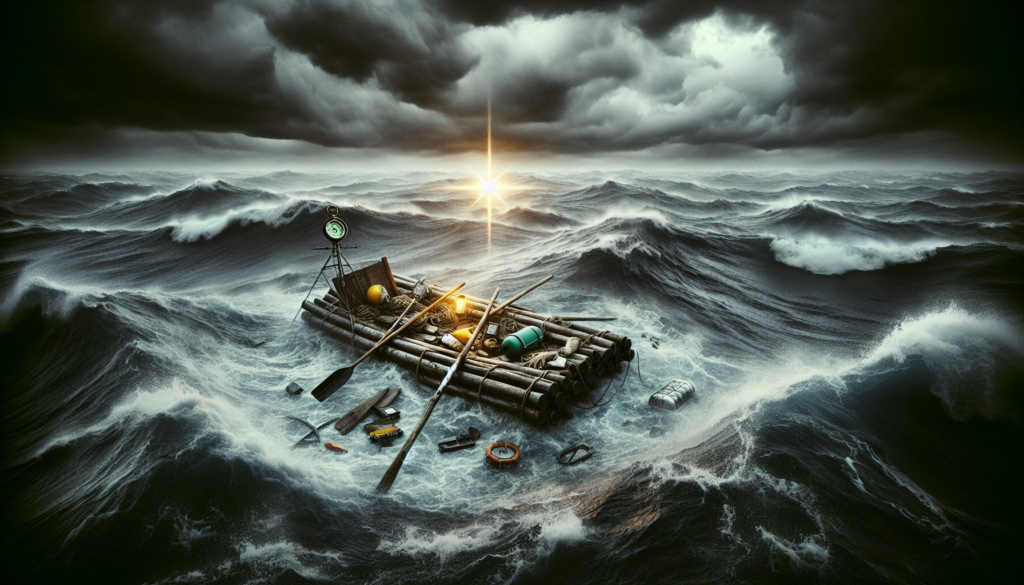
Finding Edible Food
Finding a sustainable source of food is crucial for long-term survival at sea. There are several ways to find edible food in the marine environment.
Identify edible marine life such as fish, shellfish, or sea turtles. Familiarize yourself with the species commonly found in your area. Use fishing techniques such as spearing or using makeshift nets to catch fish.
Foraging seaweed and other edible plants can also provide a source of food. Look for seaweed varieties that are safe for consumption and learn how to prepare them. Be cautious when collecting plants and ensure they are not poisonous or harmful.
Avoid consuming any species that may be poisonous or harmful. Familiarize yourself with common toxic marine life in your area to prevent any negative health effects.
Braving the Elements
Surviving at sea means braving the elements and protecting yourself from its harsh conditions. Take measures to protect against sunburn and heatstroke by wearing appropriate clothing that covers exposed skin, using sunscreen, and seeking shade when necessary.
Combatting hypothermia is also essential, especially in colder waters. Layer clothing to trap body heat, use blankets or other insulating materials, and seek dry areas whenever possible.
Handle storms and rough seas by securing your shelter and belongings. Find stable and protected areas to ride out the storm and avoid dangerous locations such as cliffs or rocky shores.
Take precautions against sharks and other marine creatures by avoiding areas with an increased presence of these animals. Use caution when swimming or fishing in open water, and never provoke or approach these creatures.
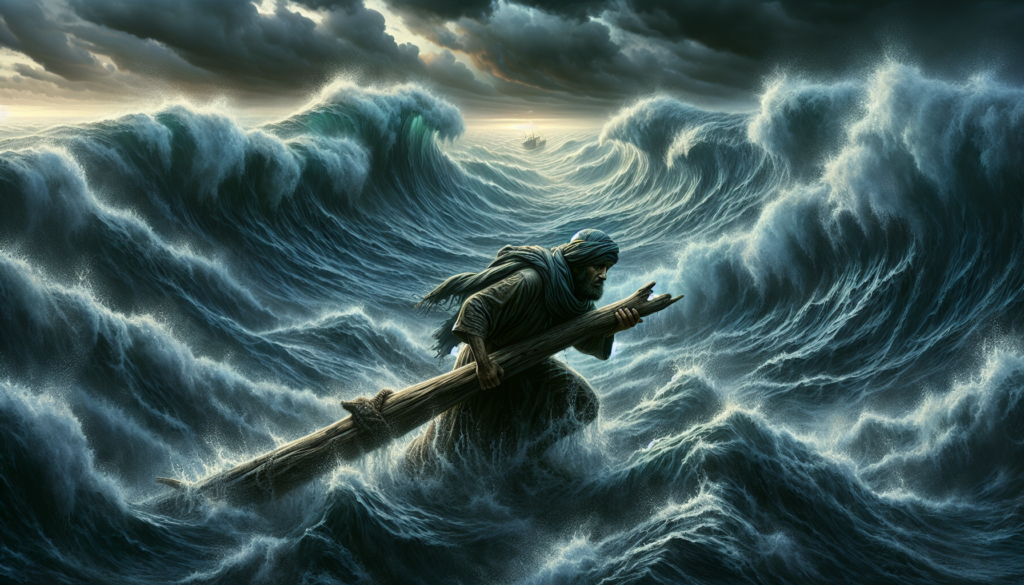
Navigating and Maintaining Direction
Navigating and maintaining direction can greatly increase your chances of survival at sea. Utilize celestial navigation by observing the stars to determine your general direction. Learn basic constellations and how they can help guide you.
Use natural landmarks such as the sun or moon to determine east, west, north, or south. Understanding the relationship between these celestial bodies and your location can help you maintain a general sense of direction.
Build and use simple navigational tools such as a makeshift compass or a homemade quadrant. These tools can help you navigate and stay on course.
Track drift and currents to understand your movement in relation to land or potential rescue routes. This knowledge will help you make informed decisions about your route to safety.
Signaling for Help
Signaling for help is crucial during a survival situation at sea. Maximize your chances of being rescued by using various means of communication.
Use emergency rescue equipment such as flares, whistles, or air horns to attract attention. These signals are recognized as distress signals and can help alert passing ships or aircraft.
Create a signal fire using any available materials. Build a fire on a high point of land or use smoke to create a signal visible from a distance.
Craft a makeshift sign using debris or rocks to create a visible message on the beach or exposed area. Use rocks to spell out “HELP” or any other symbols that can communicate your distress.
Listen for any sounds of potential rescuers, such as aircraft or ships. Stay alert and ready to respond if you hear or see any signs of potential rescue.
Dealing with Medical Emergencies
Medical emergencies can occur at any time, and it is important to be prepared to address them during a survival situation at sea.
Perform basic first aid to stabilize any injured individuals. This includes assessing and addressing wounds, fractures, or other injuries. Use available materials to dress wounds and stop bleeding.
Address wounds and infections promptly to prevent further complications. Clean wounds with clean water if available, and use any sterilized tools to remove debris or foreign objects.
Manage dehydration and heat-related illnesses by ensuring an adequate intake of freshwater and staying in shaded areas whenever possible. Monitor each survivor’s hydration levels and watch for signs of heat exhaustion or heatstroke.
If seasickness or motion sickness becomes an issue, provide comfort and support to affected individuals. Help them find a stable and comfortable position and encourage deep breathing and relaxation techniques.
By being prepared and knowledgeable about the basic resources needed to survive at sea after a shipwreck, you can maximize your chances of staying safe until rescue arrives. Assessing the situation, maintaining a positive mindset, utilizing available resources, and addressing medical emergencies are essential steps towards increasing your survival odds. Remember to stay calm, work together with fellow survivors, and never give up hope. With determination and resilience, you can overcome the challenges and emerge stronger from this ordeal.
